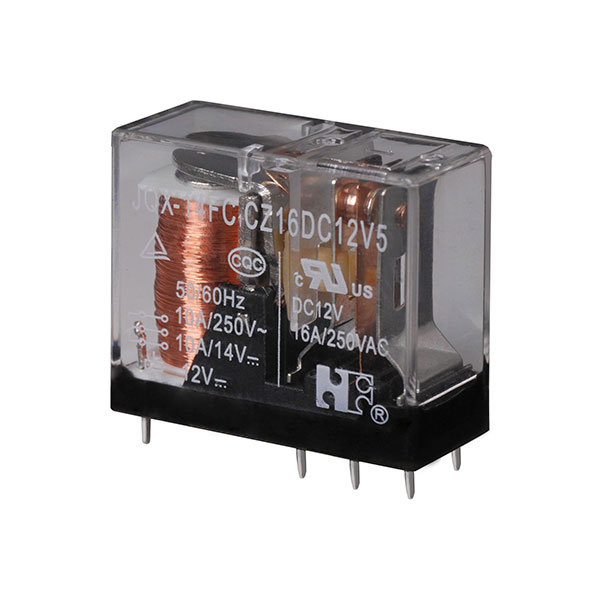Empowering Precision: Key Specifications of the 16A Transparent Cover Miniature Power Relay
2023-11-18
Introduction:
In the realm of electrical engineering, the efficiency and reliability of components hinge on precise specifications. The 16A Transparent Cover Miniature Power Relay stands as a testament to meticulous design, offering key specifications that define its capabilities in terms of voltage and current ratings. In this blog, we'll delve into these crucial specifications to unravel the power and potential encapsulated within this miniature powerhouse.
Voltage Ratings:
1. Operating Voltage Range:
The 16A Transparent Cover Miniature Power Relay is designed to operate within a specific voltage range. This range defines the electrical potential at which the relay can effectively function. For instance, it may be optimized for standard voltages like 12V, 24V, 120V, or 240V, catering to diverse applications across industries.
2. Coil Voltage:
The coil voltage is a critical specification, indicating the voltage required to energize the electromagnetic coil within the relay. It's crucial to match the coil voltage with the available power supply to ensure proper functionality.
3. Maximum Voltage:
Understanding the maximum voltage the relay can handle is essential for preventing damage and ensuring the relay's longevity. This specification represents the upper limit beyond which the relay may experience adverse effects or failure.
Current Ratings:
4. Rated Current Capacity:
The 16A in the relay's name signifies its rated current capacity of 16 amperes. This specification denotes the maximum current the relay can handle in its normal operating conditions. It is a crucial factor in determining the relay's suitability for applications with varying load requirements.
5. Contact Current Ratings:
The relay's contact current ratings provide insights into its ability to handle different types of loads. Whether it's resistive, inductive, or capacitive loads, understanding the contact current ratings ensures that the relay can reliably switch and control diverse electrical loads.
6. Inrush Current Handling:
Inrush current, which occurs when electrical devices are initially energized, can be higher than the steady-state current. The relay's ability to handle inrush currents without degradation or damage is a key consideration, especially in applications with frequent on/off cycles.
Additional Specifications:
7. Contact Configuration:
The contact configuration of the relay specifies how the internal switch contacts are arranged. Common configurations include single-pole, single-throw (SPST), double-pole, single-throw (DPST), or other variations. The configuration determines how the relay interacts with the connected circuit.
8. Temperature Ratings:
Operating conditions can vary, and the relay's temperature ratings provide information about the range within which it can function reliably. This includes both ambient temperature and temperature rise during operation.
9. Mechanical Life and Electrical Life:
Mechanical life indicates the number of cycles the relay can endure before mechanical wear may occur, while electrical life refers to the number of cycles under load. These specifications offer insights into the relay's durability and longevity.
Conclusion:
In the intricate tapestry of electrical components, the specifications of the 16A Transparent Cover Miniature Power Relay serve as a blueprint for its performance and versatility. By understanding the voltage and current ratings, engineers, technicians, and users can ensure that the relay aligns with the specific requirements of their applications. The precision encapsulated in these key specifications empowers the relay to navigate the complexities of diverse electrical environments, contributing to seamless and reliable operation in the dynamic landscape of electrical engineering.



